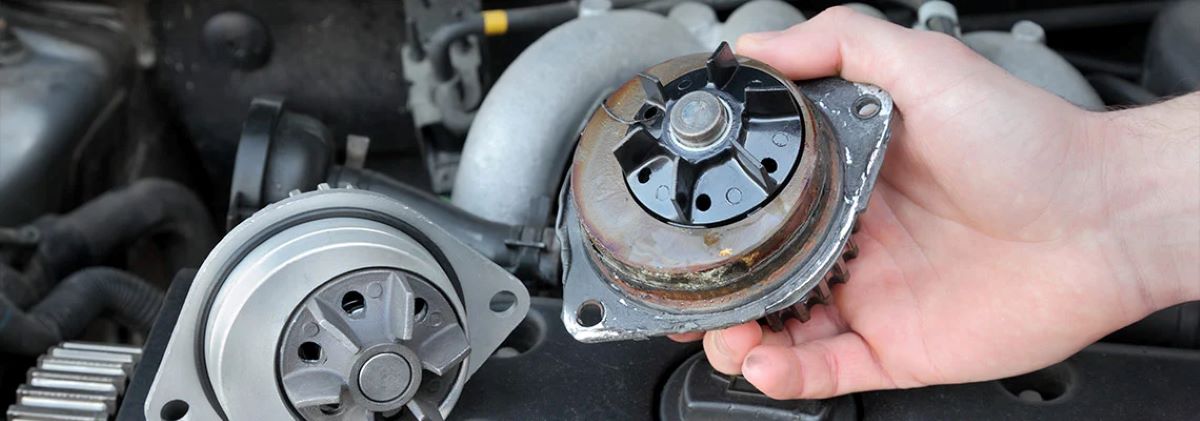An engine generates significant amounts of heat while it operates, and it is the responsibility of the cooling system to transfer this heat away from the engine and release it into the atmosphere. A critical component of this system is the water pump, which plays a crucial role in the process.
The primary function of a water pump is to circulate coolant through the engine, allowing it to absorb heat from the metal parts. This coolant then flows to the radiator, where the heat is transferred to the surrounding air.
Water pumps can fail, and when they do, they put your engine at risk of severe damage or even complete failure if the issue is ignored. For instance, if the engine overheats due to a malfunctioning water pump, it could lead to a failed head gasket, which can cost over $1,000 to repair at a shop.
Even if you attempt to fix it yourself, the cost of parts will still run into the hundreds of dollars. Fortunately, a bad water pump usually presents warning signs before it causes major damage.
Replacing a water pump is generally more affordable than other repairs, but prices can vary significantly, ranging anywhere from under $30 to more than $800, depending on the make and model of the vehicle.
Here are some common symptoms of a bad water pump to watch for.
Coolant Leaks:
Brightly colored coolant puddles under your car are a telltale sign of leaking coolant.
This is often caused by failing rubber gaskets in the water pump. It’s essential to address these leaks promptly to avoid escalating into more costly repairs.
Corrosion and Deposits:
Unchecked coolant leaks can lead to the accumulation of deposits around the water pump. Over time, this build-up can cause wear or even cavities, especially if air bubbles enter the system.
Additionally, using contaminated coolant or having a faulty pressure cap can worsen these issues, so regular inspection is crucial.
Overheating Engine:
A malfunctioning water pump can cause your engine to overheat, which is often indicated by rising temperatures on your dashboard gauge.
In such cases, replacing the pump may become necessary, especially if the internal impeller is damaged.
Whining Noises:
A high-pitched whining sound from the front of your vehicle could signal a loose pulley or worn bearings within the pump.
These issues typically require replacing the water pump to restore proper functionality.
Steam from Radiator:
If you see steam coming from your radiator, it’s a clear indication that your cooling system is failing to cool the engine effectively.
In such situations, you should stop your vehicle immediately to prevent further damage and contact an emergency mechanic. A smoky car engine is often a sign of insufficient maintenance.
Prolonging the Life of a Water Pump:
To avoid premature water pump failure, follow these maintenance tips:
Regular Coolant Replacement: Ensure the coolant remains clean to prevent harmful build-up that can damage the pump.

Proper Belt Tension: Check that the belt is correctly aligned and has the proper tension to avoid unnecessary stress on the pump.
Address Overheating Quickly:
Resolving overheating issues immediately is essential to protect the water pump’s internal components and prevent further damage.
Quality Parts:
Invest in premium-quality water pumps like those from BGA, which are engineered in the UK to meet or exceed OEM specifications. Choosing high-quality components helps to extend the lifespan of your cooling system.
Simultaneous Timing Belt Replacement:
When replacing the water pump, it’s advisable to also replace the timing belt. This practice prevents potential coolant contamination from damaging the belt.
BGA offers timing belts and comprehensive kits containing water pumps, all designed to match or surpass OE quality standards.
Replacing a water pump can be a complex task, best entrusted to professionals.
It’s generally recommended to replace the pump every 60,000 to 90,000 miles. Combining this with timing belt replacement is often convenient, as both components are accessed via the timing cover.
Upgrade to a BGA Water Pump:
GA is Europe’s leading supplier of OE-quality engine, steering, and transmission parts. Their water pumps offer a reliable upgrade for automotive technicians performing replacements.
BGA Seals:
Backed by over a century of OEM heritage, BGA develops silicon carbide seals that exemplify expertise, innovation, and reliability.
These advanced seals significantly enhance service life by resisting wear caused by debris in the cooling system.
BGA Water Pump Bearings:
BGA’s water pumps feature high-torque, OE-quality bearings equipped with PA polymer cages.
These are meticulously designed to withstand the most demanding axial and radial stresses, delivering superior performance and exceptional durability.

